You can start to forest farm mushrooms for fun or for money, really it’s up to you, but forest farming mushrooms can be a good source of income and can become quite a big business if you want it to be.
Mushrooms have so many uses, the potential for earning money growing them as a cash crop quite good.
There are small scale mushroom-growing operations that earn a humble amount of money but there are also massive large scale and very profitable operations.
The thing is – Not every mushroom farming method is eco-friendly.
Some use an incredible amount of plastic bags while others use a large amount of energy to create an indoor environment where the mushrooms grow.
Originally, I wanted to cover all methods of growing mushrooms but I ultimately decided to take most out because of the excessive waste and energy consumption.
I decided to focus on the one technique that uses natural light and environment, while also not involving the use of plastic bags.
Before we start, we need to understand a little more about mushrooms. Let’s look at what their uses are:
Types of Mushrooms and their Uses
There are different types of mushrooms and every type has its own use in nature or as a commodity.
Mushrooms are used in the culinary world, the health industry, textiles and some even use mushrooms in the packaging and construction industry, but many mushrooms benefit mother nature herself.
Growing in the wild, you can find up to 10,000 different types of mushrooms which can be separated into 4 categories: Parasitic, saprotrophic, mycorrhizal, and endophytic
Parasitic Mushrooms
Parasitic mushrooms feed on living organisms and continue to feed until and after its host is dead.
The relationship they have with nature is almost always one-sided as they do not provide any benefit to the host.
They can attack plants, trees, insects and even animals.
Some parasitic mushrooms are visible, like the ones above, but the deadliest fungi are actually very small and do not produce mushrooms.
They can be a problem when farming trees for example, since they are so small, by the time we notice the tree is sick, it will be too late already.
Interestingly, the only natural defense against such kinds of mushrooms is other fungi, for example, mycorrhizal mushrooms.
In one example, Mycorrhizal mushrooms, which form a mutually beneficial relationship with other living things, will naturally release antibiotics that fight off the parasitic fungus.
Specific plants and animals have actually adapted to encourage the growth of mycorrhizal mushrooms to fight off parasitic mushrooms.
Some parasitics mushrooms are edible like the honey fungus and lion’s mane. Chaga is also used in medicines to fight the common cold while Lion’s Mane is said to help heal nerve tissue.
When growing most parasitic mushrooms, you will need to drill holes in a log and use plug spawns sealed with food-grade wax to propagate the spores.
They are a good choice when your technique of choice is to forest farm mushrooms.
Saprotrophic Mushrooms
Saprotrophic Mushrooms have a role of decomposer in the wild world. They break down dead tissue to absorb it by releasing acids and enzymes.
They will grow on dead logs, in leafy forest floors or even man-made wooden structures.
Their decomposition of dead matter releases Co2 into the atmosphere through aerobic respiration.
While this may have an impact on world Co2 levels, this is a natural process and breaks down dead matter which ends up being beneficial to the forest itself.
Some reproduce quickly by spores that spread to nearby substrates while others have rhizomorphs that allow them to travel and explore the forest floor.
Many kinds of saprotrophic mushrooms are edible like shitake and white buttons while others like Reishi are highly sought-out medicinal mushrooms.
Growing saprotrophic mushrooms like reishi are generally simple.
It’s possible to forest farm mushrooms like saprotrophic on logs. Although the usual technique for most is with organic matter substrates mixed with some other cheap ingredients.
Mycorrhizal Mushrooms
Mycorrhizal mushrooms have a beneficial relationship with the forest. They form a symbiosis with trees and plants through the root systems.
They either weave into the root cells or wrap around the root themselves.
All the mushrooms ask the roots are sugars, which the tree produces naturally, and in exchange, they provide moisture, phosphorus, and other useful nutrients.
Some trees and plants depend on a symbiosis with mycorrhizal mushrooms to maintain optimal health and growth.
These mushrooms create incredible numbers of mycorrhizal filaments that expand throughout the forest.
Which means when the fungus links to a tree through its roots, it actually increases the roots reach by up to a thousand times.
These mycorrhizal filaments help the soil in many ways like gluing it together, improving its structure and its porosity, which is beneficial for trees and plants’ root growth.
Different kinds of mycorrhizal mushrooms will associate with different kinds of trees.
For example, matsutake like to associate with pine trees, truffles like to associate with deciduous trees like oaks and hazelnuts, and chanterelles can associate with both conifers and deciduous trees.
Many mycorrhizal mushrooms are harvested as non-timber forest products.
They considered delicacies and very sought out in cuisine from all around the world, truffles, chanterelles, and matsutake are good examples.
Forest Farming mushrooms like mycorrhizal is not easy, as they often only grow in a very specific forested environment. You will need the appropriate tree host and to innoculate the ground, hoping for the mushrooms to propagate.
Endophytic Fungi
Endophytic fungi live inside plant tissues, including many types of deciduous trees, shrubs, herbs, lichens, marine algae, and much more.
They create a sort of chemical inside of the plant that makes it poisonous to eat for herbivores.
But they also have a relation with how the plants take in nutrients, how it can handle the heat, like during the time of drought.
They affected how vegetation in general evolved, which means endophytic fungi play a role in biodiversity.
One of the most important biomedical discovery in history is thanks to endophytic fungi.

In 1928, one of the earliest discoveries was penicillin, which was isolated from the fungus Penicillium notatum.
Endophytic fungi are microscopic, we only ever see them grown in Petri dishes. This makes them not such a good choice when forest farming mushrooms.
Mushrooms are actually much more important to forests than we would think.
- Parasitics mushrooms attack other living things, feeding off of them until and after they die.
- Saprotrophic mushrooms help the forest by decomposing dead matter.
- Mycorrhizal mushrooms create symbiotic relationships with trees and plants by exchanging nutrients through their roots.
- Endophytic fungi actually live inside of vegetation and provided such plants with evolutionary advantages.
From this little informative bout, you can see that not all categories are good choices when forest farming mushrooms.
Although what we know today in forest farming is not everything there is to know, we still cannot figure out how to farm mycorrhizal mushrooms exactly how they are in the forest.
Endophytic fungi are almost strictly growing in labs.
For now, this gives us the last two remaining categories for forest farming mushrooms: Parasitic and Saprotrophic. Let’s see how we can do this:
Forest Farming Mushrooms on Your Rural Land
To me, farming mushrooms outdoors on rural land is the most interesting, since you don’t have to build anything to store your mushrooms in, they will be growing out there in the wild!
While it may not boast the biggest production yield, forest-grown mushrooms are much more valuable in the market than their indoor-grown counterparts. Why?
It is said that log-grown shiitake mushrooms are nearly twice as high in health-promoting polysaccharides than shiitake grown indoors on an artificial substrate.
It is also said that wild morel tastes much better than indoor grown ones.
Additionally, forest farming mushrooms on your rural land will be beneficial to the forest itself, and wildlife. The spores have a chance to propagate and grow naturally outside of your operation.
It will also permit you to spend more time in nature and really get to know your rural land. Not a bad way to use your rural land as a source of income, right?
Don’t get it wrong though, while forest mushroom farming is part-time, it is periodically labor-intensive, like during log cutting, inoculation, and fruiting.
What you’ll need to forest farm mushrooms
Forest farming mushroom is nice because you don’t need many things to start with. Compared to indoor operations, your costs will be much smaller. Here’s what you need to start:
- Cut Logs – from live hardwood trees
- An electrical drill
- A special wood drill bit with stop collar
- Food Grade Wax
- A brush to spread the wax
- Rubber Mallet to tap plugs
- Mushroom spawn plugs
Depending on how big you want your forest farming operation to be, you might need these additional things to increase productivity:
- An off-road vehicle like a Quad (to get through your forest trails)
- A trailer to attach to your quad (to easily carry your logs)
- A chainsaw (to cut trees down or clear your trail)
- A brushcutter (to clear up the mushroom growing area or make your trail)
Where you can forest farm mushrooms
The first thing you want to look at is, do you have a proper forest on your rural land that is optimal for mushroom growth? Does your area have a humid climate?
Is your forest cover dense enough to provide good shade?
If you do, what type of mushroom is most likely to grow on your type of land?
Forest farming mushrooms requires the use of logs, which you will drill holes into and then plug with spawns, which finally will be sealed with wax.
Mushrooms don’t like to grow on conifer logs, you will need logs from deciduous trees. It’s also good to know that not one tree type is good for all. Some log farmed mushrooms prefer softwoods while others prefer hardwoods.
Start by looking at your forest to see what type of tree is dominant, if you got plenty of deciduous trees, it’s perfect.
But if you don’t, it’s not a worry, you can get your logs from other sources.
The forest, even with conifers, will still provide the shade, moisture, and environment for the mushrooms to grow.
Depending on where you live, growing mushrooms might be seasonal (up north) or all year long (down south).
First, find a partly shaded part of forest, clear all the bushes and weeds. You need areas like this to place your logs.
The 3 log stacking techniques above work well for growing mushrooms.
Your logs need to be in the shade to stay moist, if it’s not raining enough lately, you can mist them or cover them under tarps to keep in the moisture.
Alternatively, if you want a more serious operation, you should irrigate your setup with water channels.
If you have a lake or a water source nearby, you can periodically divert water into your channels to keep the whole area humid.
Ideally, you’ll have a trail going through your land, if not then a good idea would be to make one. This is where the bush cutters and chainsaw come handy.
How to forest farm mushrooms
The process of farming mushrooms might seem complicated at first, but in reality, it’s quite simple to begin.
While it’s a simple skill to begin, there is a huge potential for growth in expertise.
Mushrooms are complex organisms which means you can learn something new every year while farming them even if you’re an experienced veteran.
These are the 5 steps, in order, that you want to be familiar with in mushroom farming:
- Acquisition (logs and plug spawns)
- Choosing (What mushrooms you want to grow)
- Inoculation (preparing for growth)
- Colonization (waiting for spawning)
- Production (Cultivating the mushrooms)
The following portion of the guide will give you step by step instructions on how to start forest farming mushrooms.
Step 1: Get your mushroom growing logs
The logs you need for growing mushrooms don’t need to be from your big trees, they generally do well on smaller logs.
Log size is flexible but good dimensions for your mushroom growing logs are 3 feet long by 6 inches in diameter.
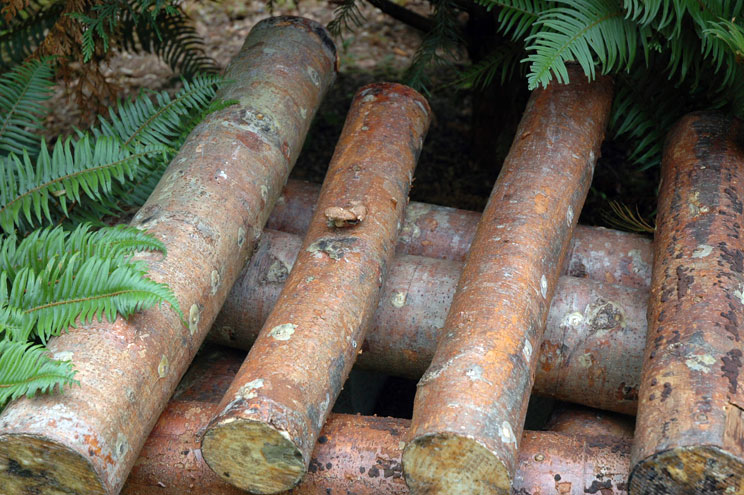
Bonus Fact: Every inch of diameter equals to about 1 year of fruiting.
Keeping them this size is good though because you will need to move the logs around in the later stage.
You want to cut your trees in late winter to early spring before buds swell.
Don’t just cut any tree though, use the trees you have to cut when your clear your trail, your production site, or pasture edges.
Trees with lichens on them are no problem, you don’t need to brush the lichens off before inoculating.
Remember that conifers are not good trees for mushroom farming, you will need to first determine what type of mushroom you want to grow before getting your logs.
If you don’t have access to deciduous trees, you can buy them from a local source but remember they need to be fresh-cut trees.
For example, these are the favorite trees of the most commonly log cultivated mushrooms:
- Shiitake: oaks, elms, sweetgum, beech
- Oysters: maple, oaks, mulberry, quaking aspen
- Lion’s mane: beech, oaks
Once you have your logs cut, you are ready to inoculate them with mushrooms spawns.
Step 2: Choose the mushrooms you want to grow
Not every mushroom likes to grow on logs, some only grow in soil and substrate mixes like straw and sawdust.
Parasitic and saprotrophic mushrooms can grow on logs but mycorrhizal only grow in soil.
Keep in mind that the technique of growing will be similar in general but some specifics will change depending on the mushroom you choose.
These are some of the marketable mushrooms you can grow on logs:
- Shiitake (Lentinula Edodes) Red Maple, poplar or other deciduous hardwood
- Reishi (Ganoderma lucidium) Deciduous hardwood
- Oyster Mushrooms (Pleurotus Ostreatus) Poplar, oak, sweetgum or any hardwood
- Elm Oyster (Hypsizygus tessulatus) Oak, poplar or any deciduous hardwoods
- Lion’s Mane (Hericium Erinaceus) – Oak logs
- Maitake (Grifola Frondosa) – Large buried oak/black locust logs or stumps
- Chicken of the woods (Laetiporus cincinnatus) – Large buried oak logs
- Nameko (Pholiota nameko) – Any deciduous log
- Turkey Tail (Trametes versicolor) – Any hardwood
For more choices of mushrooms, what they grow on and when they fruit, read this zone fruit map.
And once you have picked what you want to grow, you can order your plug spawns online at mushroom mountain.
Step 3: Inoculate your mushroom growing logs
You can inoculate right away after cutting your logs but generally, you can wait from 1-2 weeks (in warm weather) or 2-4 weeks (in cold weather) after you cut your logs to inoculate.
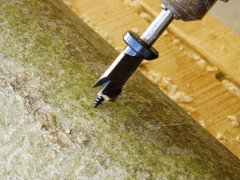
The first step of inoculating is drilling the holes in your logs.
You want to space out the holes about 15 cm each and make rows on the log, so if you followed the dimensions we spoke of earlier, you’ll have about 30 holes.
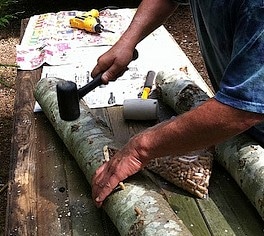
Get your plug spawns ready and carefully tap them in with a rubber mallet.
Use paraffin, cheese wax, or bee’s wax to seal the plugs and edges of your logs after inoculating. This will prevent other fungi from invading your log.
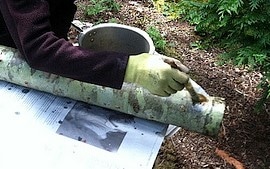
Using a brush, spread the hot wax to seal the holes and sides.
An important note: If you plan to irrigate and constantly water your logs, leave the ends of the logs unsealed to let the water absorb easily. If you will rely on nature and rainfall, seal them.
Now repeat this process for as many logs as you’d like to inoculate. Congrats! You’ve just completed the hardest part.
Step 4: Wait for your mushroom logs to colonize
At this point, you need to put your inoculated logs in a shady, moist area.
Bring them to your designated spots in the forest and stack them how you’d like. On the ground, stacked in crosses, straight up in X or leaning against a tree.
In this stage, the fungus begins to decompose the organic matter in the log. As the log decays the spawns will go farther into the log.
Be ready to wait from 3 months up to 16 months for the mushrooms to completely colonize the wood. Some mushrooms like oyster are faster than others.
This period is called the spawn run. Your priority during this period is to ensure that the logs do not dry out.
Keep track of the rainfall, if there isn’t enough rain and the logs are threatened to dry out, you’ll have to water them.
If your forest cover lets in too much sunlight, you might have to hang up greenhouse woven shade cloths.
Step 5: Cultivate your mushroom logs
After the colonization is complete and the temperature is right, your logs will start to fruit.
Depending on the size of your log, you will be able to harvest up to twice a year from the same log for many years to come.
The fruiting times will be sporadic and unpredictable since these mushrooms are grown in nature.
Although there are ways to force or shock your inoculated logs into fruiting. This will take a lot of effort if your operation is large and you don’t irrigate.
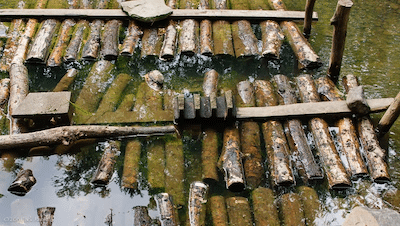
Forcing logs to fruit is done by soaking them in cool water like this from 24 to 48 hours.
After shocking them, maybe 7-10 days later, the small mushroom primordials (pins) will begin to show on the log.
Not long after your mushrooms will be ready to harvest, time depending on the current temperature.
When your logs are ready to harvest, it should look something like this.
As you can see, it’s really not too complicated to forest farm mushrooms.
- Pick a spot, then you clear it.
- Pick what mushroom you want to grow
- Cut down some mushroom appropriate trees, cut logs to the proper length
- Drill holes in your logs, plug them with spawns and seal with wax
- Place them in your designated area and maintain the moisture
- Wait long enough for the mushrooms to fruit
Voila! Now you can harvest and go to farmers’ markets, contact local restaurants, or post online to sell your fresh forest farmed mushrooms!
Note: Remember that you need to sell them right away or refrigerate them. Mushrooms don’t stay fresh for very long.
But If you plan to store them for a long time, dehydration your mushrooms is the way, but they might lose flavor in the process.
Good luck with mushroom farming!

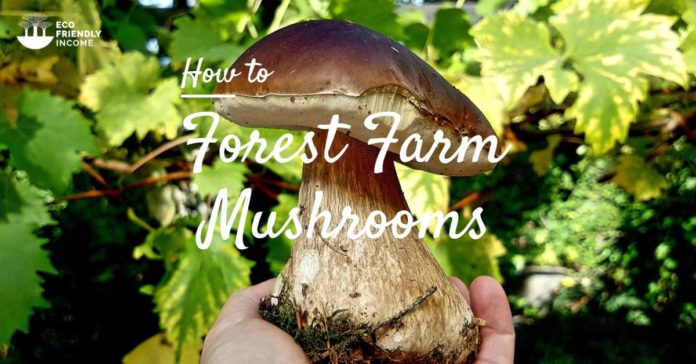
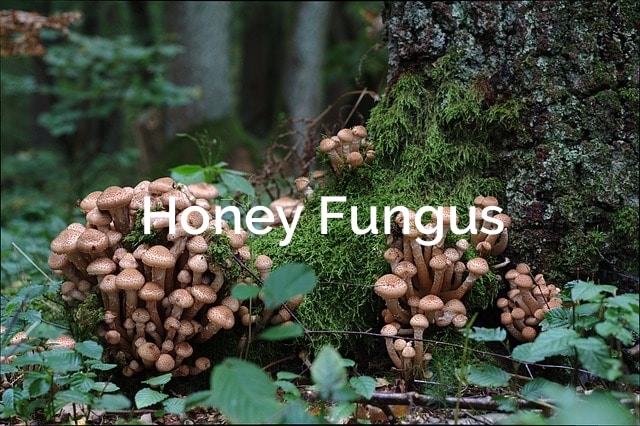
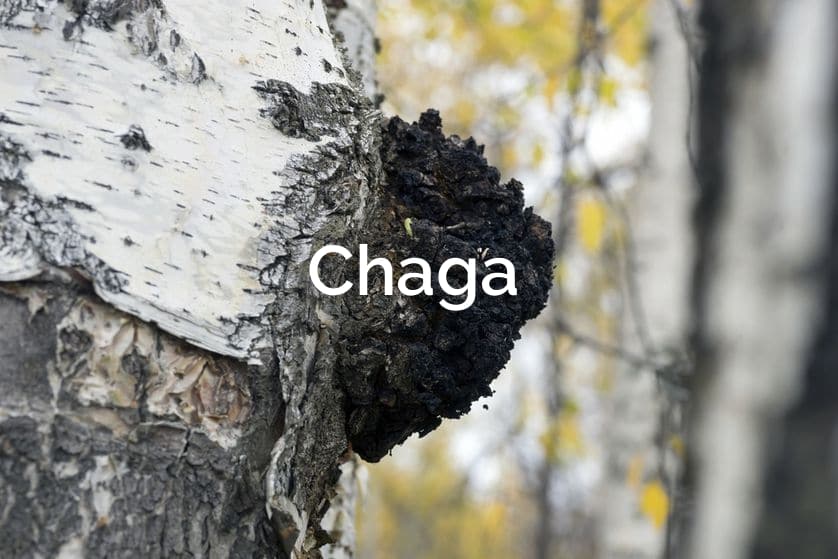
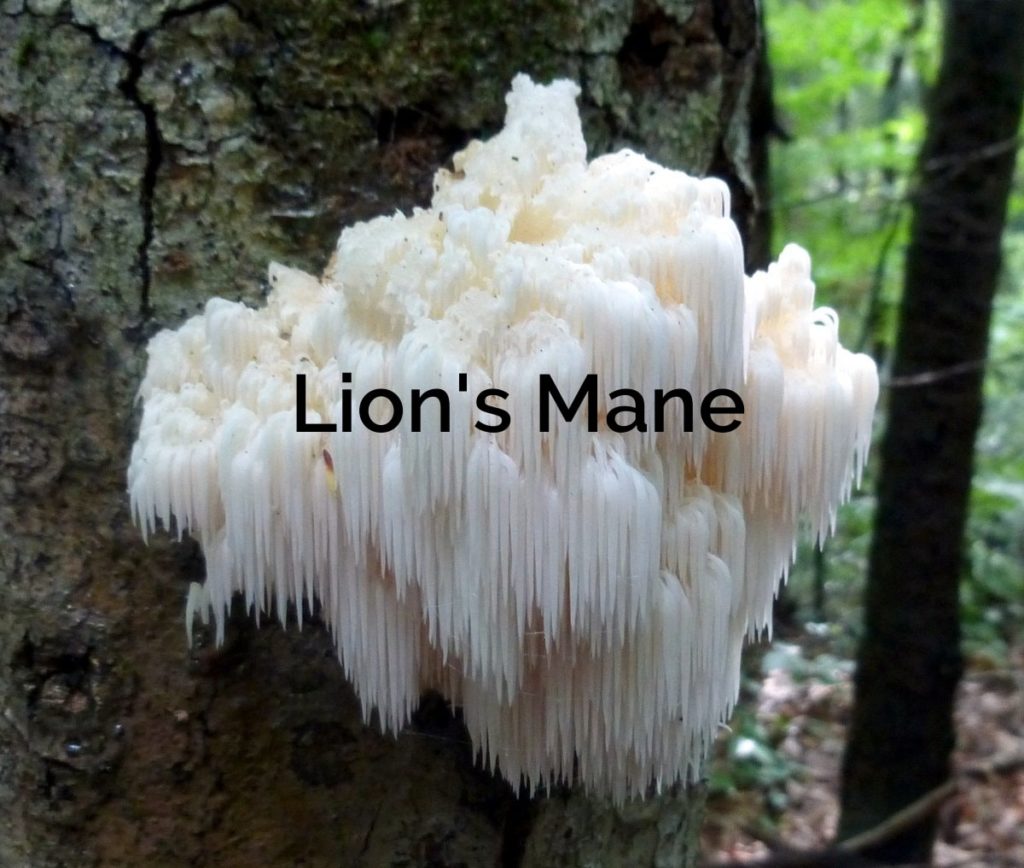
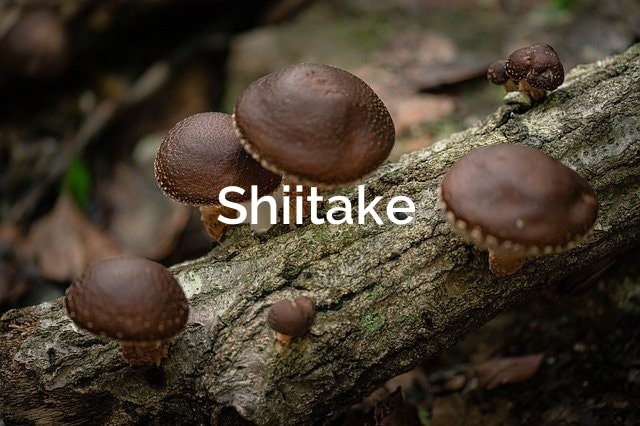
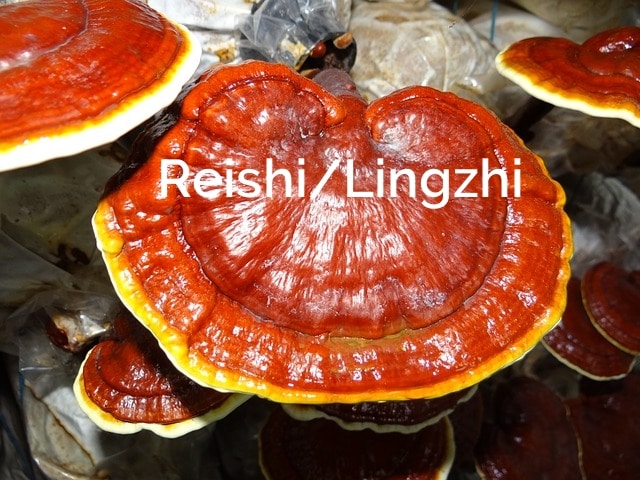
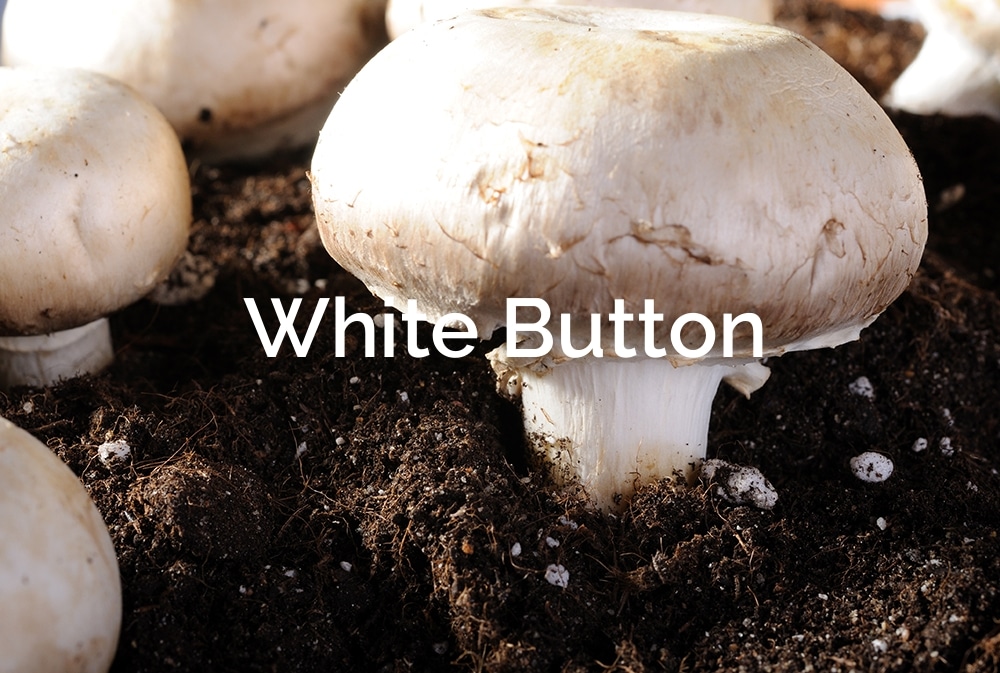
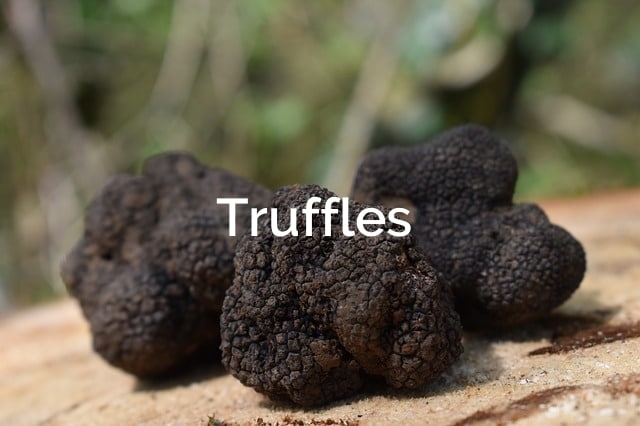
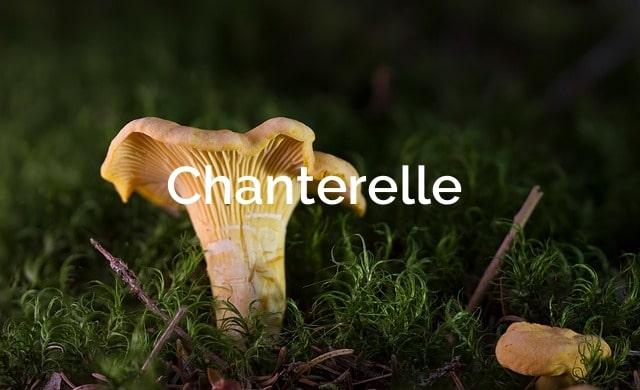
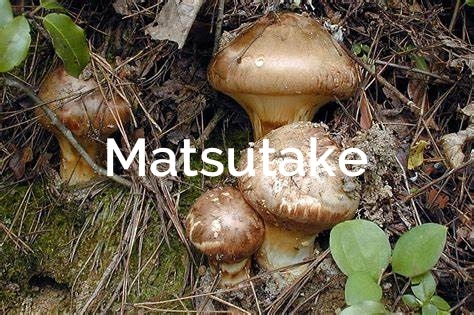
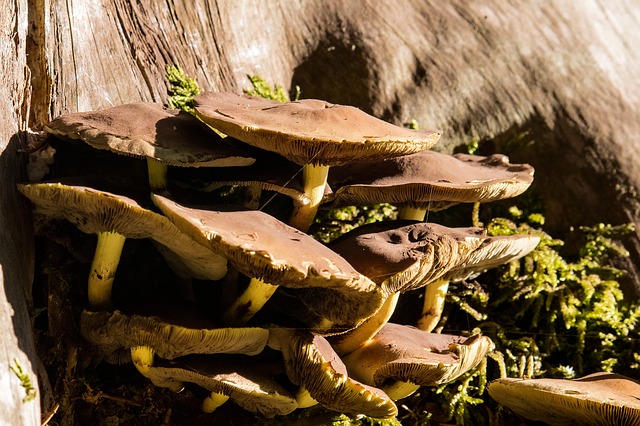
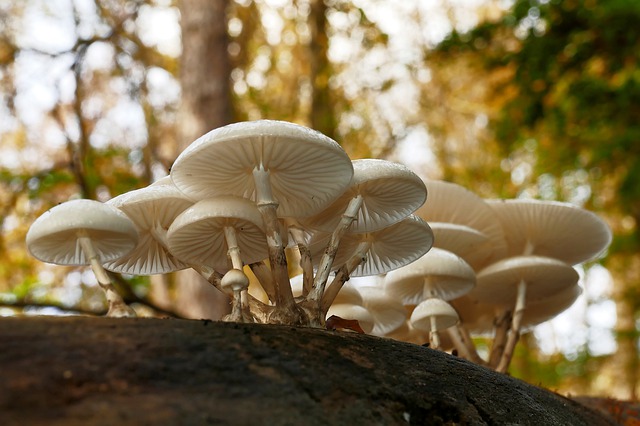
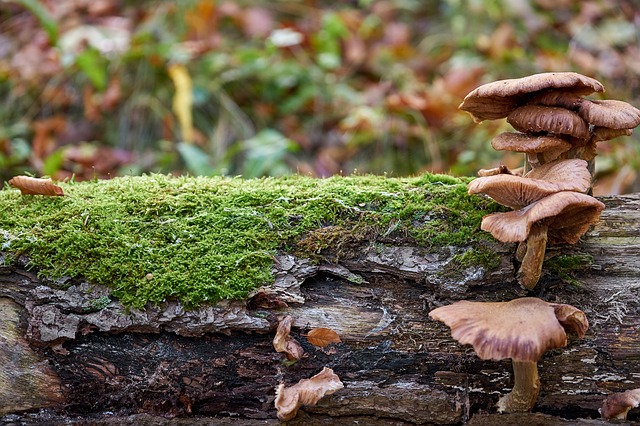
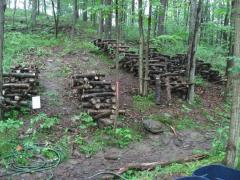
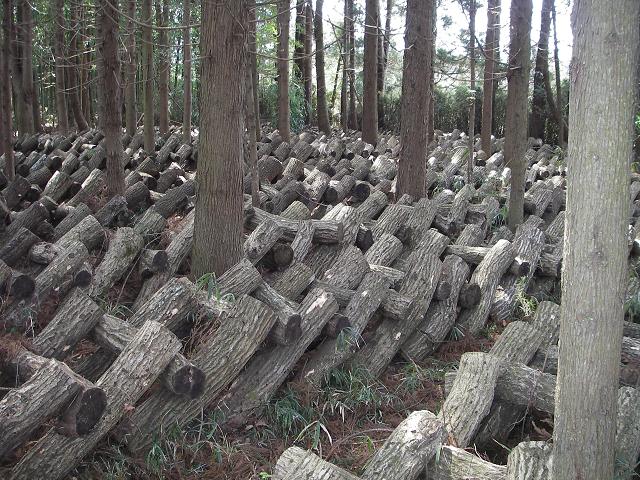
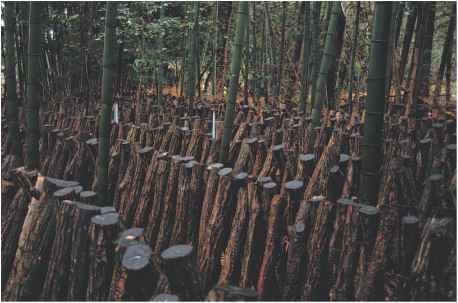
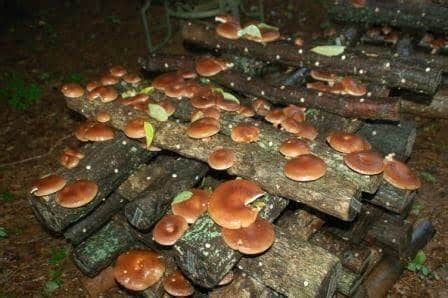
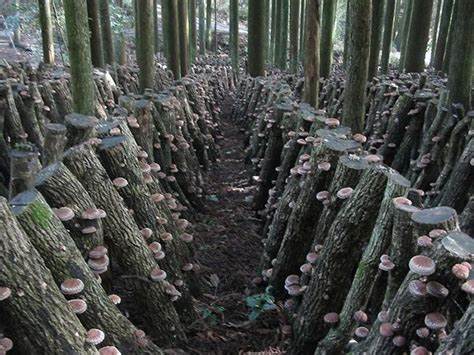
Great content! Super high-quality! Keep it up! 🙂